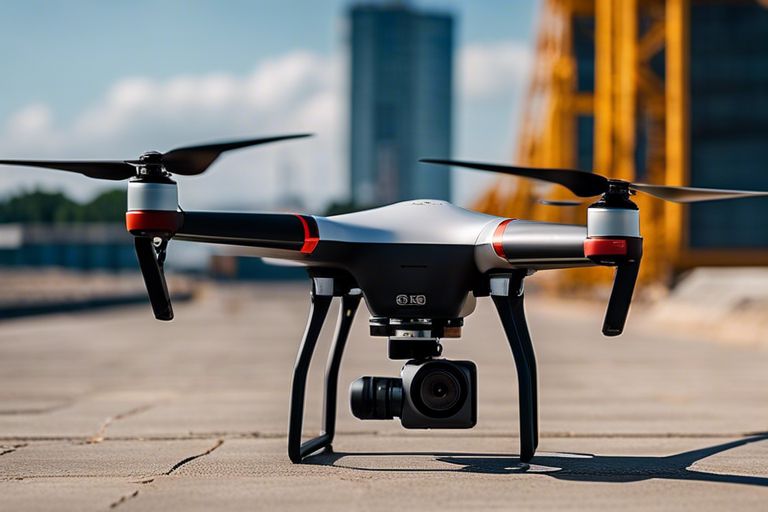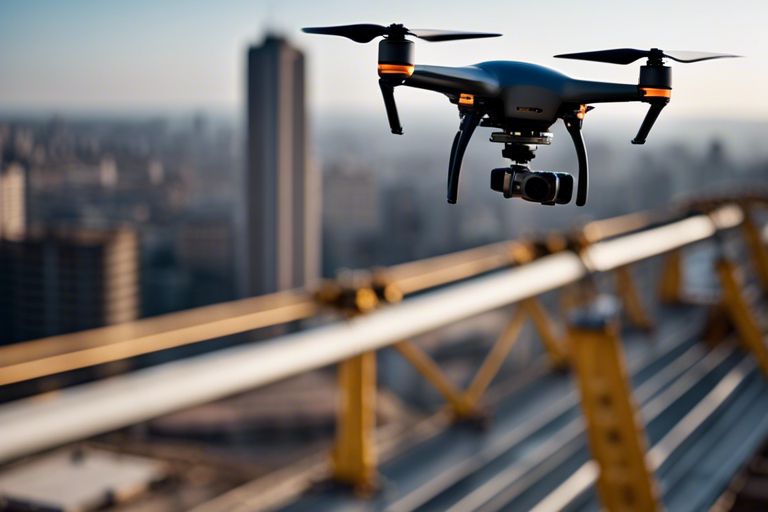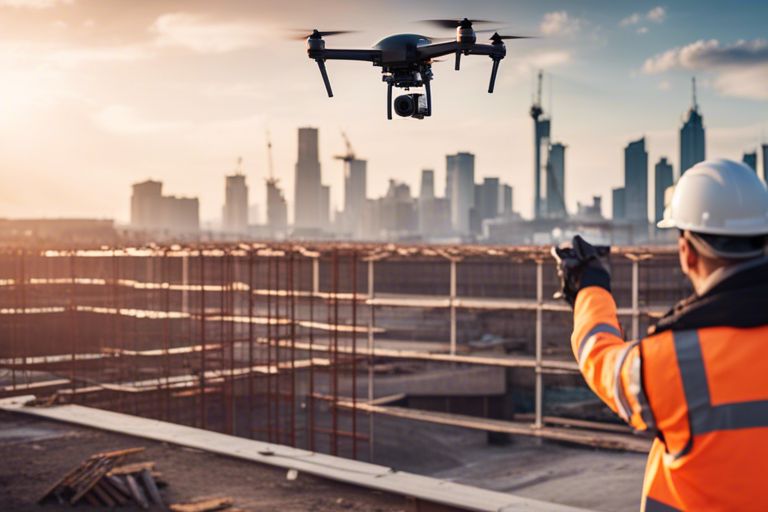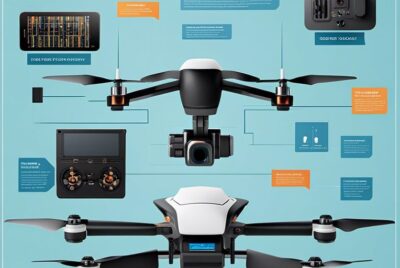“Drones in Construction – Surveying, Mapping, and Inspections”
This comprehensive guide explores the growing role of drones in the construction industry, specifically focusing on surveying, mapping, and inspections. Drones have revolutionized how construction professionals gather data, monitor progress, and ensure quality and safety on job sites. From capturing aerial images for site surveys to conducting thermal inspections of buildings, drones are reshaping the way construction projects are planned and executed. In this blog post, we will examine into the various applications of drones in construction and highlight the benefits they bring to the industry.
Drones in Surveying and Mapping
Advancements in Aerial Surveying Techniques
With advancements in drone technology, aerial surveying techniques have seen a significant transformation in the construction industry. Drones equipped with high-resolution cameras and LiDAR sensors can capture detailed images and data of construction sites from various angles and elevations, providing accurate topographic maps and 3D models.
These drones can fly autonomously along pre-planned routes, covering large areas in a fraction of the time it would take traditional surveying methods. The data collected by drones can be processed quickly using specialized software to generate accurate and up-to-date maps for project planning, design, and monitoring.
Precision Mapping with Drone Technology
Surveying professionals can now achieve precision mapping using drone technology, offering a level of detail and accuracy that was previously unattainable. Drones can capture high-resolution images and create orthomosaic maps, digital surface models, and point clouds that provide valuable insights for construction projects.
Using drones for precision mapping enables construction teams to monitor progress, identify potential issues, and make informed decisions in real-time. The ability to access updated and detailed maps enhances project efficiency, reduces risks, and ultimately leads to cost savings.

Drones for Construction Site Inspections
Enhancing Safety with Drone Inspections
One of the key benefits of using drones for construction site inspections is the enhancement of safety. Drones can access hard-to-reach areas and provide real-time footage without putting human inspectors at risk. By utilizing drones, construction companies can minimize the need for workers to climb scaffolding or enter hazardous zones, reducing the potential for accidents and injuries.
Additionally, drones equipped with thermal imaging cameras can identify potential safety hazards such as overheating equipment or electrical issues. This proactive approach to safety inspections allows construction teams to address problems before they escalate, keeping workers and the site safe.
Drone Inspections vs. Traditional Methods
With drone inspections becoming more prevalent in the construction industry, comparing them to traditional inspection methods is essential. Drones offer a faster and more cost-effective solution compared to manual inspections. They can cover large areas in a fraction of the time it would take human inspectors, increasing efficiency on construction sites.
Furthermore, drones provide a detailed view of the site from various angles, allowing for a comprehensive assessment of the construction progress. Traditional methods such as manual inspections may not offer the same level of detail, leading to potential oversights or missed issues during the inspection process.
A deeper consideration of the differences between drone inspections and traditional methods reveals that drones can capture high-resolution images and videos, which can be revisited and analyzed later. This detailed documentation can be valuable for project managers and stakeholders to track progress, identify issues, and make informed decisions during the construction process.

Integrating Drone Data into Construction Workflows
Software and Data Analysis
An essential aspect of integrating drone data into construction workflows is the utilization of specialized software and data analysis tools. These tools play a crucial role in processing the vast amount of data collected by drones during surveys, mapping, and inspections. With the help of sophisticated software, construction professionals can generate detailed 3D models, orthomosaic maps, and point clouds from drone imagery.
Moreover, data analysis software allows for the extraction of valuable insights from drone data, such as volumetric measurements, topographic information, and area calculations. By leveraging these tools, construction teams can make informed decisions, identify potential issues early on, and streamline project workflows.
Improving Project Management with Drone Intelligence
An integral part of integrating drone data into construction workflows is improving project management through drone intelligence. Drones provide real-time visibility into project sites, enabling project managers to monitor progress, track resources, and ensure adherence to timelines. By incorporating drone data into project management systems, construction teams can enhance communication, collaboration, and overall efficiency.
By integrating drone intelligence into project management practices, construction companies can enhance safety protocols, optimize resource allocation, and improve project outcomes. The use of drones for aerial surveys and inspections significantly reduces the time and costs associated with traditional methods, ultimately leading to more successful construction projects.
Project managers can utilize drone data to create digital twins of construction sites, allowing for remote monitoring and efficient decision-making throughout the project lifecycle. This technology enables real-time updates, progress tracking, and accurate resource management, ultimately improving project outcomes and client satisfaction.

Legal and Regulatory Considerations
Drone Regulations in the Construction Industry
To effectively utilize drones in the construction industry, it is crucial to understand and comply with the regulations set forth by aviation authorities. In many countries, commercial drone operations are subject to specific rules and requirements to ensure safety and adherence to airspace regulations. Understanding the regulatory landscape is essential for construction companies looking to leverage drones for surveying, mapping, and inspections.
To operate drones legally in the construction sector, companies must obtain the necessary licenses and permits. These often include remote pilot certifications, airspace authorizations, and compliance with flight restrictions in certain areas. Failure to adhere to these regulations can result in fines, penalties, and even legal action. Therefore, it is imperative for construction firms to stay up to date on the evolving regulatory environment and ensure strict compliance.
Best Practices for Compliance and Safety
Any construction company utilizing drones must prioritize compliance and safety to mitigate risks and ensure smooth operations. Implementing a comprehensive drone safety program that includes regular maintenance checks, pilot training, and flight planning is crucial. Companies should also establish protocols for data management and privacy to protect sensitive information collected during drone operations.
With the right measures in place, construction firms can maximize the benefits of drone technology while minimizing potential liabilities. By prioritizing compliance with regulations and safety best practices, companies can harness the full potential of drones for surveying, mapping, and inspections in the construction industry.
Final Words
On the whole, drones have revolutionized various aspects of the construction industry by enhancing surveying, mapping, and inspections. Their ability to provide real-time data, improve safety, and reduce costs makes them indispensable tools for construction professionals. As technology continues to advance, drones will likely become even more sophisticated and integrated into construction processes. Embracing this technology and staying informed about regulations and best practices will be crucial for companies looking to stay competitive and efficient in the modern construction landscape.



